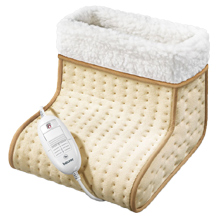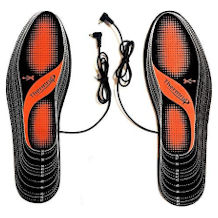Foot file purchasing advice: how to choose the right product
- What You Need to Know
- Electric callus removers remove excess callus easily and quickly.
- They are gentler on the skin than callus rasps, planes or files.
- Depending on the thickness of the callus, rollers with different thicknesses are suitable.
- The coarser the surface of the roller, the more effective the device is on stubborn calluses.
- If the callus remover is waterproof, it can be easily cleaned under the tap.
When skin protection becomes a problem
Nowadays, many people attach importance to how they look to others. Long facial and body care routines or strikingly designed fingernails are just a few of the many methods used to achieve the desired overall impression. In this endeavour, aesthetically pleasing feet are also important, whereby the yellowish thickenings that characterise calluses are often disturbing. In fact, calluses are a natural protective mechanism of the skin against external influences and possible injuries.
The cause of calluses is mainly the pressure exerted on the feet by one’s own body weight on the one hand and by objects on the body on the other. Friction also plays a role. Calluses develop mainly on the heels and balls of the feet, but also, for example, on the fingertips of guitarists or on the palms of the hands of people who cycle or row a lot, as these areas are subjected to prolonged stress in everyday life.
To a certain extent, callus is definitely beneficial in heavily stressed areas of the body. However, if the callus layer is too thick and pronounced, it can hurt under certain circumstances. Particularly in dry skin, calluses appear more frequently. In addition, this skin protection can tear, which makes the feet susceptible to bacteria and germs. Sometimes this leads to inflammation, fungal skin infections or even blood poisoning.
This is how calluses develop
Callus is a local thickening of the upper layer of skin. The skin consists of three layers: the epidermis, the dermis and the subcutis. The epidermis protects the skin from foreign bodies and germs. This is provided by the so-called horny layer (stratum corneum), which is made up of so-called horny cells (corneocytes). These are dead horn-forming cells (keratinocytes) that are responsible for the production of keratin. They develop in the lowest layer of the epidermis, the basal layer, and are pushed to the skin surface by subsequent cells. In the process, they keratinise, lose their nucleus and become the plate-like corneocytes. These then form the so-called skin barrier with lipids and moisturising agents.
The thickness of the epidermis depends on the load. Therefore, it is most pronounced on the soles of the feet and on the palms of the hands. Calluses occur when excessive pressure on an area of skin stimulates cell division.
How to remove calluses
There are many methods to choose from to remove calluses for aesthetic or health reasons. A simple and gentle way is to use an electric callus remover. They consist of a handle with an integrated electric motor. It drives a roller attachment that is equipped with small particles. This removes calluses in a similar way to sandpaper when smoothing wood. The motors of electric callus removers can make about 30 revolutions per second, although some stop if users apply too much pressure.
In contrast to callus shavers or planers, the risk of injury is low because the safety stop function on electric models is triggered as soon as users apply too much pressure. Removing too much callus is therefore unlikely. If the callus is removed manually, there are no safety features to protect the skin from mishandling. With the sharp metal or ceramic blades of callus planes, the risk of cutting deeply into the skin due to incorrect application is particularly high.
Other popular tools are callus files and pumice stones. Thanks to their rough surface, both rub off the callus much more gently than rasps or planes. However, it takes a long time to remove the callus. With an electric callus remover, the application time is much shorter. The grained surface of callus files is similar to the attachments of electric callus removers, but most versions can only be used on dry skin. Pumice, on the other hand, is a porous volcanic stone that was already used in ancient times to remove calluses and is used on wet skin. In addition to natural pumice stone, there is also a synthetic version. Used correctly, pumice is one of the gentlest methods.
Coffee grounds peeling against calluses
A practical home remedy for soft and supple feet is coffee grounds. Dead skin flakes can be removed with a peeling made of coffee grounds and a little olive oil. Regular use prevents excessive calluses from forming in the first place. However, coffee grounds will not help existing thick layers of callus.
Why electric callus removers are practical
Electric callus removers serve both aesthetic and health purposes. If you feel a slight burning sensation when walking because the corneal layer is too thick, you can walk again without any problems after treatment with an electric callus remover without having to pay a lot of money for professional foot care. The devices remove excess callus in a short time. Thanks to the gentle mode of action, electric callus removers can be used regularly. With each procedure, users have full control over how much callus to leave. It is advisable to leave a little callus to protect the feet. If the callus causes more pain, it is advisable to seek professional help.
Furthermore, many electric callus removers can be equipped with several attachments in different thicknesses so that users can choose the right roller for their skin condition. In addition, some devices are able to remove calluses on the hands. This often occurs, for example, in people who work in a manual profession or play a side instrument.
What to look for when buying
When buying an electric callus remover, it is important to know which areas are affected by calluses and how thick the layers of callus are. Some devices are not only suitable for the feet, but also for the hands. If you want to treat the fingertips, it is best to look for models that are marked accordingly.
Drive type
Electric callus removers are powered by a mains cable, rechargeable battery or replaceable batteries. Compared to the other variants, you are limited with a corded callus remover. While models with a mains cable are not suitable for use in the shower, for example, this is perfectly possible with many cordless models.
Furthermore, the freedom of movement depends on the length of the cable. To move around as undisturbed as possible, a cable length of at least 250 centimetres makes sense. Battery-operated models, on the other hand, can be used independently of external power sources. Therefore, they are also suitable for travelling abroad. Since other countries often do not have the same power outlet, corded devices quickly reach their limits without an additional adapter.
From a financial perspective, battery-powered models are at a disadvantage compared to the other types, as they are the only ones that incur follow-up costs. However, a battery charge usually lasts longer than a battery charge. So that users do not have to interrupt the callus removal process, a model with a battery life of at least half an hour is recommended.
Ease of use
The operation of electric callus removers is simple: users only need to move the roller over the desired areas to remove excess callus. Since the operation of the devices is simple, they are not equipped with comprehensive features. However, some devices allow the speed to be adjusted in several stages. It is practical if an indicator shows when the battery is empty. This way, the device does not switch off unexpectedly in the middle of use.
Models that can be cleaned under running water are also recommended. Such models also allow for wet use. Mains-operated callus removers, on the other hand, are usually only suitable for dry skin.
The handle is usually made of plastic, in some cases of metal. To ensure that the handle fits well in the hand, it is ideally ergonomically shaped. Furthermore, a non-slip layer helps to make the device comfortable to use. The shape and the low weight ensure that it can be used over a longer period of time without fatigue. Castors that can be moved or rotated 360 degrees are helpful for reaching all areas to be treated.
Castors
Both the material of the roller and the grain size determine to a large extent how well the skin can be freed from keratinisation. The surface usually consists of mineral or metal particles. Some models also use diamond particles, which are particularly effective in removing calluses thanks to their hardness.
Many manufacturers offer several rollers in different thicknesses as accessories. Scholl, for example, a company specialising in foot care, provides four rollers: Fine, Strong, Extra Strong and Ultra Strong. Others offer only a coarse roller for thick, stubborn calluses and a fine version for light calluses or for the finishing touch.
Make sure that replacement rollers are available. If the callus remover is not from a well-known brand, it can be difficult to find suitable replacement rollers. If you use the device once a week, you should change the roller after three months at the latest. It is advisable not only to research whether replacement rollers are available, but also how much they cost from different manufacturers. Prices sometimes differ by several euros.
Other accessories
Some callus removers not only come with several rollers, but also with a protective cap that protects the roller from external influences. A cleaning brush for removing dust, skin flakes and micro-particles is also typical. Battery-operated models usually come with a charging cable. On the other hand, battery-powered devices do not always come with suitable batteries. If you do not already have them at home, you will have to get them before the first callus removal. It also makes sense to buy a storage bag if it is not already included. A small bag or case is ideal for storing the device and accessories.
Other foot care products
Foot care does not only include the regular removal of excess calluses. It is also advisable to regularly apply a moisturising foot cream to the feet. A care cream or lotion is particularly useful directly after callus treatment. It works against dryness, cracks and ensures soft skin. If the skin on the feet cracks, chapped foot ointment is an effective treatment.
Regular foot baths are also useful. Suitable bath additives are available either in liquid or powder form. Even without extras, a twenty-minute foot bath in lukewarm water helps with subsequent callus removal because it softens the skin. Depending on the composition of the foot bath, different effects can be achieved. An effective recipe for callus removal, for example, consists of 100 millilitres of apple cider vinegar or lemon juice and lukewarm water. Apple cider vinegar also helps with swollen feet, among other things.
Another means of caring for the feet are foot masks. These are basically soft socks with a cream of nourishing ingredients such as urea, shea butter or panthenol on the inside. You simply slip the socks over your clean, dry feet and let the mask take effect. It is best to follow the manufacturer’s recommendations. It is also possible to rub a thick layer of foot cream on your feet and put on normal socks. This is an excellent option for overnight wear.
Callus removal for diabetics
Many diabetics have problems with their feet: nerve damage in the foot causes, among other things, dry, cracked skin, a poorer sense of temperature and pain, and slow-healing wounds. Due to the low sensation of pain, small wounds often go unnoticed, which combined with poor wound healing can be dangerous. It is therefore advisable for diabetics to take care of their feet – especially as they are often affected by excessive calluses, calluses and chapped feet.
The problem is that only methods that can be used to remove calluses without irritating the skin are suitable. Foot baths before callus removal should be gentle enough not to stress the feet. Ideally, the water temperature should not exceed 35 degrees Celsius. After a maximum of five minutes, the feet should be dabbed with a soft towel.
Among the manual methods, a synthetic pumice stone is the most suitable. The risk of injury is too great with callus rasps, planes and files. Some electric callus removers are suitable for diabetics. In this case, it is advisable to consult the doctor in charge. Alternatively, a podiatrist can gently remove the cornea.

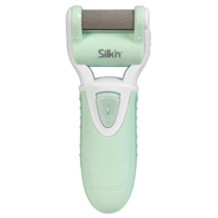
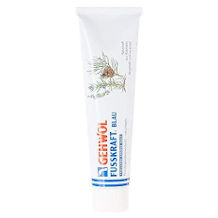
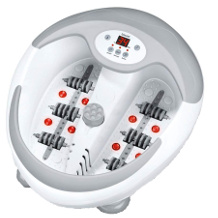
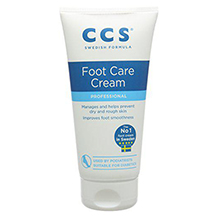
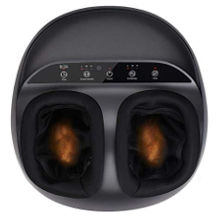
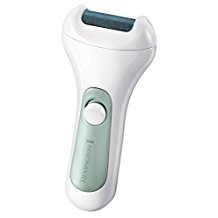
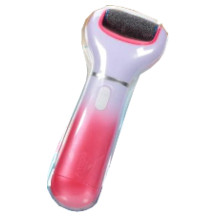
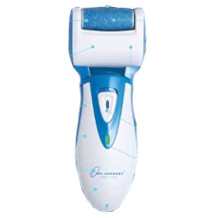
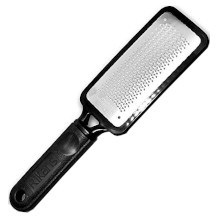

 208 reviews
208 reviews

